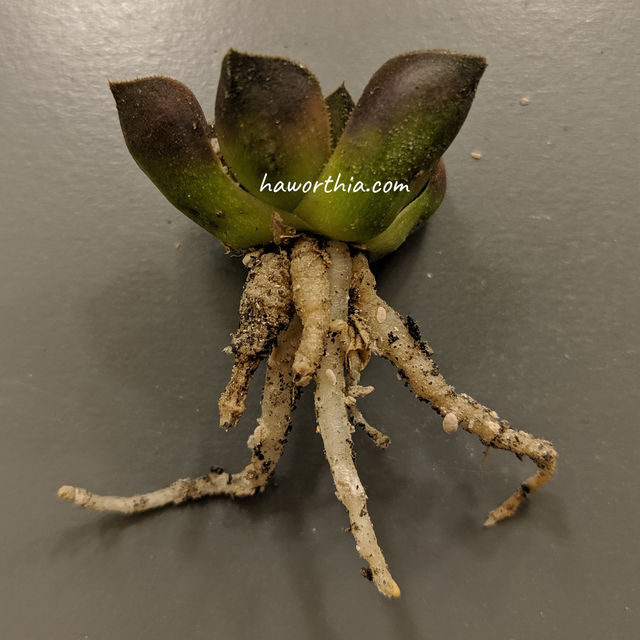Mealybug
Mealybugs can cause severe problems like root and leave rot if left unattended. Besides constant inspections, periodically applying systemic insecticides is an excellent preventative measure.
Inspection
Surface mealybugs tend to hide in between leaves or where leaves attach to the stem. Look for their white flecks or cottony residues. Root mealybugs dwell underground and often leave white markings on the roots and the nearby growing medium. It is recommended to inspect the roots carefully whenever a plant is taken out for caring or propagation.

Treatment
For an infested plant, clean as much of the growing medium out of the roots, even this may tear off some roots. The removed growing medium should be discarded. Soak the whole plant in a warm ~1% solution of potassium fatty acids (often branded as insecticidal soap) for ~2 hours. This kills any adults and eggs. Rinse the plant in warm water and let it dry out in a cool and shaded place. After that, follow the rooting process to let the plant recover.
Prevention
Imidacloprid is a very effective systemic insecticide against mealybugs. Once applied, it will be absorbed by the plant and transported to all the tissues. The toxicity will active for ~1/2 year. The besting timing of application is in spring and fall when “when temperatures are moderate and Haworthias are actively absorbing water. To apply, water with a ~0.004% Imidacloprid solution until the growing medium is fully drenched.
